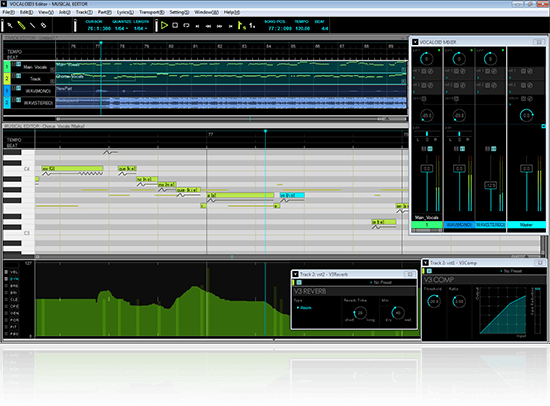

I get this error alot, not even in english or japanese.

(Is there a correct font? And if so, where?) In that video it turns text into Japanese characters. I can’t write japanese, or even have the correct font for doing so on this pc. If they have been found inappropriate to be placed in this site, I’ll take them down. P.S.: The video above was from Crypton Media Blog. Now, go ahead and make a great song with your VOCALOID! So before entering the lyrics, think about those two examples for a while and change your lyrics where suitable for the VOCALOID to sing it. Why? Because usually, the っ indicates a small pause in a normal word, but in the VOCALOID editor, your VOCALOID reads it as a big tsu (つ). Now, the kitto ( きっと) part have been read by the VOCALOID editor as kitsuto ( きつと). I don’t think you’ll get this problem when typing the lyrics in romaji, but if I’m wrong, please tell me in the comments below.Įnter the lyrics just like that on the VOCALOID editor and your VOCALOID would sing it like this: Note that this example is only applicable when you input the lyrics in hiragana or katakana. Here’s another example of what I’m talking about, still from the same song. So it’s better to just write yo ( よ) in the VOCALOID editor, and then drag the note to show that it’s pronounced a bit longer. Well, you ( よう) is usually pronounced as a longer version of yo ( よ), but your VOCALOID would emphazise the u ( う) part.

When you enter the lyrics just like that on the VOCALOID editor, your VOCALOID would sing it like this: Now, so that we could understand it better, let’s romanize it. This is a part of the lyrics from CLANNAD’s opening theme, メグメル ~Cuckool Mix 2007~. My explanation just now might be confusing, so here’s an example of what I’m talking about. If you want to be sure, just sing the song by yourself and type what you hear from your mouth. Also keep in mind that the “Ha” (は) and “Wa” (わ) case is different with the “He” (へ) and “E” (え) case. Keep in mind that your VOCALOID is singing every word you type, he/she doesn’t read it and make necessary changes by its own. Well, in a real life situation, even though Watashiha was written as “わたしは”, it’s usually pronounced “Watashiwa”, or “わたしわ”. And you maybe notice that in the end of the video, the guy changes “Ha” (は) into “Wa” (わ). Note: If you couldn’t view the video above, be sure that you’ve already installed the Adobe Flash Player.Īnd there you have it! Now your VOCALOID is singing! It’s that easy! Now what’s left is just the tuning part (and maybe make some PV if you’re planning to upload it into a video sharing site such as Nico Nico Douga). Here’s another explanation video from Crypton. But if you want to type in romaji, read on…
Tiny vocaloid editor how to#
Unless if you want to type in hiragana, I would probably make a tutorial on how to install the Japanese writing system later on. Remember, the VOCALOID editor can accept romaji lyrics, so you can just type using the english keyboard without a special thing. If you don’t have the Japanese fonts and the ability to type Japanese on your computer, you don’t have to worry about it. And then you’re done! Click play to check if your VOCALOID can sing it properly. Either double click on one of the pitch lines and type it, or right click on any of the pitch lines and select “Enter lyrics…”, and then enter the lyrics into the window that appears. To enter the lyrics, it’s pretty straight forward. The Japanese VOCALOID would accept romaji, hiragana or katakana. So you could play it and hear your VOCALOID says “a” with the pitches (he/she would sound like he/she’s humming the song), and if you’re happy with that, the next step is to enter the lyrics. After you created the pitch, you could clearly see that they’ve filled the lyrics section with a bunch of “a”.
Tiny vocaloid editor activation code#
*Upon purchasing Oliver, you’ll receive your personal activation code by email.So now that you have the pitches you created yourself or from importing the MIDI file as shown as in the previous step. Sending notes, lyrics and musical expression to the Synthesis Engine Inputting lyrics and automatic conversion to phonemesĪssigning musical expression templates from an Icon Palette *Tiny VOCALOID3 Editor which has the following functionalities: Use Vocaloid as a singer, for backing vocals, an effect or an instrument. Write in a word and hear a virtual vocalist sing it back. The evolution of the Virtual Vocalist continues with the release of Vocaloid 3 from Yamaha and Vocal Artist libraries from PowerFX.


 0 kommentar(er)
0 kommentar(er)
